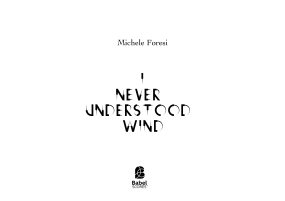breath-image
ISMN : 979-0-2325-3714-6
- Identifiez-vous pour créer une liste
'breath-image' takes its title from François Jullien's book 'The Great Image Has No Form,' which explores the idea of the nonobject in painting through the lens of various classic treatises on Chinese landscape painting. The breath-image, or breath-resonance, is spoken of in the writings of Wang Wei and Guo Xi as a kind of pre-logical intuition, an apprehension of the undifferentiated whole of a landscape--its atmosphere. From an initial breath-image, apprehension is allowed to move 'from atmosphere to the yin or yang tonality of the landscape, then to the structuration of reliefs,' proceeding, as Jullien writes, 'from the more general-evanescent to the more tangible and rigid.'
The music follows the line of questioning arising from the idea of a breath-image. How and where does form emerge over time from the undifferentiated fount of pure sound? This question is asked not only in regard to large-scale form emerging over the span of the entire piece, but also of the smallest spaces within the sound itself––its “inbetween-ness.” Can forms emerge there? This is the spirit of the question that emerges in the last page of the piece, a text score that opens up a space for meditating on the inbetween-ness of sounds. The first idea comes from Lao Tzu: 'The great tone makes only a tiny sound.’ Then comes a question asked originally by Keiji Nishitani, in a slightly different form: Where is the sound blooming? What about the locus of the unfolding of this sound? Where does it bloom from? It is my hope that the piece provides a space for a deeper kind of listening that opens itself up to asking these questions, in a curious and engaged way.
Commissioned by Sound and Music & Lietuvos Kompozitorių Sąjunga.
conducted by Karolis Variakojis
Pages - 20




